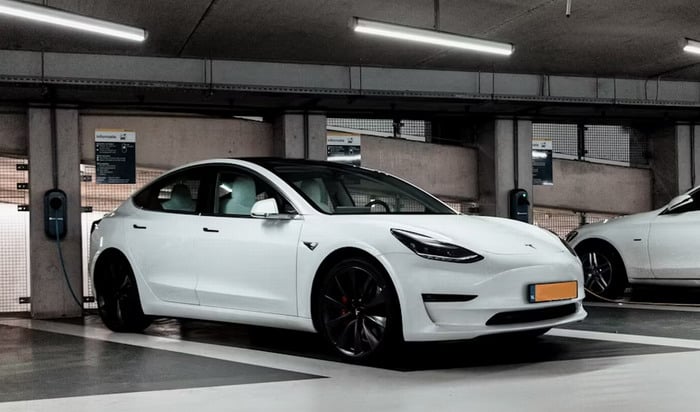What is the Environmental Impact of Electric Vehicles?

In an era where sustainability takes center stage, electric vehicles (EVs) have emerged as a beacon of hope for a cleaner, greener transportation future. As the automotive landscape undergoes a profound shift towards electrification, it becomes imperative to scrutinize and comprehend the environmental impact of electric vehicles comprehensively. Let’s see what is the environmental impact of electric vehicles.
Challenges electric vehicles pose to the environment
The Green Promise of Electric Vehicles
At first glance, the promise of electric vehicles appears inherently green. These vehicles, powered by electricity stored in batteries, offer a departure from traditional internal combustion engines, notorious for their contribution to air pollution and climate change. By reducing or eliminating tailpipe emissions, EVs aim to mitigate the environmental impact associated with conventional transportation methods.
Reducing Tailpipe Emissions
One of the primary advantages of electric vehicles is the significant reduction in tailpipe emissions, particularly greenhouse gases like carbon dioxide (CO2). Traditional internal combustion engines emit substantial amounts of CO2 and other pollutants, contributing to global warming and air quality deterioration. The electrification of vehicles directly addresses this issue by eliminating tailpipe emissions during operation, making EVs a crucial player in climate change mitigation.
The Life Cycle Analysis Challenge
However, to truly grasp the environmental impact of electric vehicles, it is essential to conduct a life cycle analysis. This holistic approach considers the entire lifespan of a vehicle, from raw material extraction and manufacturing to use and eventual disposal. While EVs excel in operational emissions, concerns arise regarding the environmental toll associated with battery production, rare earth metal extraction, and end-of-life disposal.
Battery Production and Raw Material Extraction
The production of electric vehicle batteries, typically lithium-ion batteries, demands a considerable amount of raw materials, including lithium, cobalt, and nickel. The extraction of these materials often involves environmentally impactful processes, and the mining industry’s practices can lead to deforestation, habitat destruction, and water pollution. Striking a balance between the demand for raw materials and sustainable extraction practices is a challenge that must be addressed for EVs to be truly environmentally friendly.
Energy Source and Grid Decarbonization
Another critical factor influencing the environmental impact of electric vehicles is the source of electricity used for charging. In regions where electricity is predominantly generated from fossil fuels, the overall emissions associated with EVs may not be as low as expected. However, as the grid transitions to cleaner energy sources such as wind, solar, and hydropower, the environmental benefits of electric vehicles are magnified.
End-of-Life Considerations
Addressing the environmental impact of electric vehicles also involves managing their end-of-life phase. The disposal and recycling of batteries present challenges, as these processes must be conducted with environmental responsibility in mind. Innovations in battery recycling technologies are underway, aiming to minimize the environmental footprint associated with retiring electric vehicle batteries.
Societal Shifts and Urban Planning
Beyond the vehicle itself, the widespread adoption of electric vehicles prompts shifts in societal behaviors and urban planning. The need for extensive charging infrastructure and the potential strain on the electricity grid necessitate thoughtful planning to ensure a seamless transition. Integrating EVs into urban landscapes requires considering charging station accessibility, energy distribution, and the potential for increased energy demand.
Navigating Towards Sustainable Electromobility
As the electric vehicle landscape continues to evolve, there are promising strategies and innovations that can further enhance their environmental credentials. To truly harness the potential of electric vehicles and mitigate their environmental impact, a comprehensive and forward-thinking approach is necessary.
Advancements in Battery Technology
One of the most critical aspects of improving the environmental impact of electric vehicles lies in advancing battery technology. Researchers and engineers are tirelessly working on developing batteries with higher energy density, longer lifespan, and reduced dependence on rare and environmentally sensitive materials. Solid-state batteries, for example, hold promise for addressing both performance and environmental concerns associated with traditional lithium-ion batteries.
Transition to Sustainable Materials
The mining of minerals like cobalt, nickel, and lithium for battery production has raised ethical and environmental concerns. Moving towards sustainable and ethical sourcing of these materials is paramount. Initiatives aimed at reducing the reliance on rare earth metals or exploring alternative materials for battery construction can contribute significantly to mitigating the environmental impact associated with raw material extraction.
Circular Economy Practices
Embracing circular economy principles in the electric vehicle industry is an effective strategy. This involves designing products with recyclability in mind, encouraging the recovery of valuable materials from end-of-life vehicles, and fostering a closed-loop system for battery components. Implementing robust recycling infrastructure and creating financial incentives for recycling initiatives can further strengthen the circular economy model.
Renewable Energy Integration
The true environmental benefits of electric vehicles are realized when they are powered by electricity generated from renewable sources. Governments and energy providers play a pivotal role in accelerating the transition to renewable energy. Investing in wind, solar, and hydropower projects, along with integrating smart grid technologies, can ensure that the electricity used to charge electric vehicles is sourced sustainably.
Public Awareness and Education
Public perception and awareness are crucial in shaping the future of electric vehicles. Educating consumers about the entire lifecycle of electric vehicles, from production to disposal, can lead to more informed choices. Governments, industry players, and environmental organizations should collaborate on public awareness campaigns highlighting the environmental benefits and challenges associated with electric vehicles.

Charging a BMW M model, image source: Unsplash
Incentives for Sustainable Practices
Governments can play a proactive role in incentivizing sustainable practices across the electric vehicle supply chain. Offering tax breaks or subsidies for manufacturers adopting eco-friendly production processes, supporting research and development in sustainable materials, and promoting responsible mining practices through regulatory frameworks can stimulate positive change.
Investment in Charging Infrastructure
The successful integration of electric vehicles into mainstream transportation relies heavily on a robust charging infrastructure. Governments and private entities should invest in expanding and upgrading the charging network. Strategic placement of charging stations, fast-charging technologies, and smart charging solutions can address range anxiety and encourage more people to make the switch to electric vehicles.

Graphene batteries can improve the EV industry? image source: Unsplash
Collaboration for a Sustainable Future
Addressing the environmental impact of electric vehicles requires collaboration on a global scale. Governments, industries, environmental organizations, and consumers must work together to set and achieve ambitious sustainability targets. Knowledge-sharing, technology transfer, and collaborative research initiatives can accelerate progress towards a more sustainable electro-mobility landscape.
Conclusion
As electric vehicles become an increasingly common sight on roads worldwide, their environmental impact demands careful consideration. While the reduction in operational emissions presents a positive step towards a cleaner future, addressing the challenges associated with battery production, raw material extraction, and end-of-life management is crucial.
The road to sustainable transportation involves a holistic approach, encompassing advancements in battery technology, responsible mining practices, grid decarbonization, and societal shifts. Governments, industries, and consumers alike must collaboratively navigate this transformative journey, ensuring that the promise of electric vehicles as environmentally friendly alternatives is realized in its entirety. In embracing this challenge, we pave the way for a transportation landscape that harmonizes with the health of our planet.







